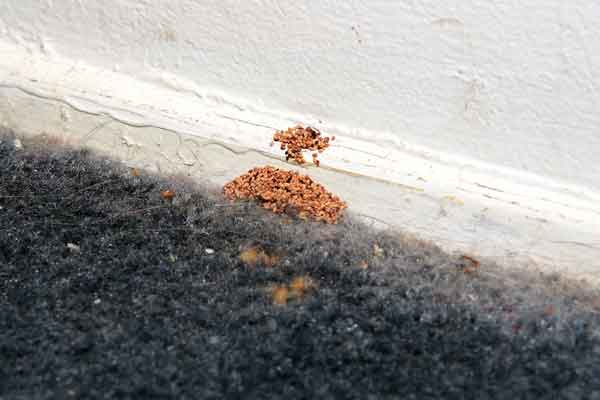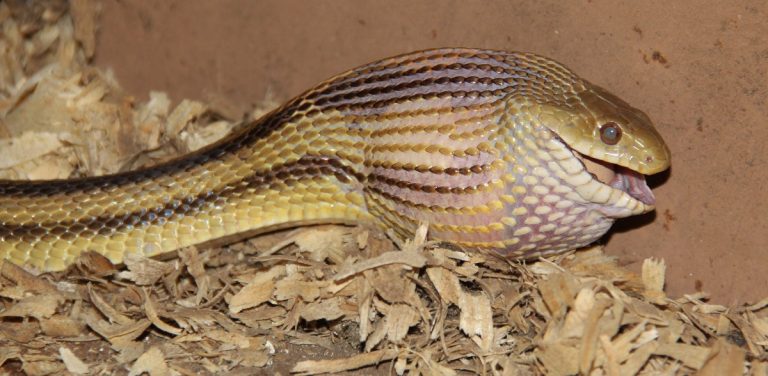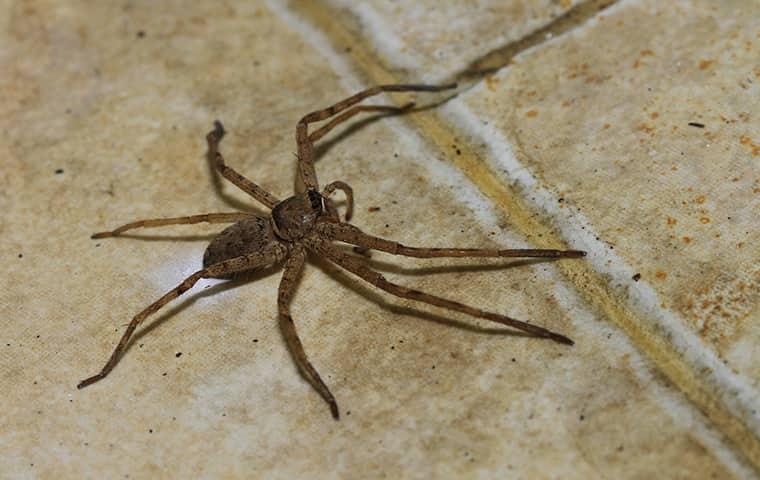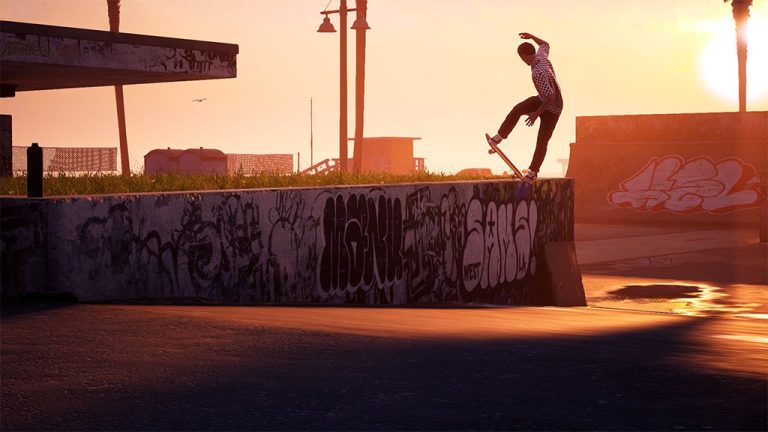What Do Drywood Termites Look Like
Drywood termites are small, wood-destroying insects. They vary in color from light brown to black and are about 1/8 to 3/8 of an inch long. Their wings are clear with dark veins and they have a body shape that is somewhat flattened.
These pests are often mistaken for flying ants.
** What Do Drywood Termite Droppings Look Like **
Drywood termites are small, wood-colored insects that live in dry wood. They are often found in furniture, cabinets, and other wooden structures. Drywood termites can be a serious problem because they eat wood and can cause extensive damage to homes and other buildings.
Signs of Drywood Termites
Are you concerned you may have drywood termites in your home? These wood-destroying insects are a major problem for homeowners, causing billions of dollars in damage each year. Fortunately, there are some telltale signs that can help you determine if you have an infestation.
One of the most common signs of drywood termites is the presence of fecal pellets. These small, cylindrical pellets are about the size of a grain of rice and are generally dark brown or black in color. You may find them near windowsills, baseboards, or on floors near areas where wood is located.
If you suspect you have an infestation, it’s important to check for these pellets regularly as they can help confirm the presence of termites.
In addition to fecal pellets, another common sign of drywood termites is wings around your home. As these insects mature, they shed their wings so they can mate and start new colonies.
You may find wings piled up near doors or windowsills as well as on floors or countertops. If you see wings, it’s important to look for other signs of an infestation as well since they could just be from flying ants which do not pose the same threat.
Another sign to watch out for is hollowed-out wood.
As drywood termites feed on wood, they create tunnels and galleries within it which can weaken its structure and integrity over time. This damage is usually not visible from the outside but tapping on affected areas with a hard object can often reveal a hollow sound. Wood that has been damaged by drywood termites will also sometimes appear blistered or raised due to the pressure from tunnels inside it.
If you think you might have drywood termites in your home, it’s important to contact a pest control professional right away as these pests can cause serious damage if left untreated!
Drywood Termites Droppings
Drywood termites are one of the most destructive pests in the United States, causing an estimated $2 billion in damages each year. These voracious eaters can quickly destroy your home or business if left unchecked. And one of the telltale signs of a drywood termite infestation is piles of droppings, also known as frass.
Frass is actually drywood termite feces and it looks like small pellets or sawdust. If you see piles of frass near windowsills or doors, it’s a good indication that there are drywood termites in the area. These pests prefer to eat wood that’s close to the surface, so they often leave behind piles of frass as they feed.
If you suspect you have a drywood termite problem, it’s important to call a professional pest control company right away. These experts will be able to identify the source of the infestation and develop a treatment plan to get rid of the pests for good. Ignoring a drywood termite problem will only make matters worse and could end up costing you thousands of dollars in repairs.
How Do Drywood Termites Enter Home
Drywood termites are one of the most common types of termites in the United States. They’re also one of the most destructive, causing billions of dollars in damage each year. If you have drywood termites in your home, it’s important to get rid of them as soon as possible before they cause serious damage.
So how do drywood termites enter homes? There are a few ways:
1. Through cracks and gaps in the foundation or exterior walls.
These tiny openings are often undetectable to the naked eye, but they’re big enough for drywood termites to squeeze through. Once inside, the termites can quickly start damaging woodwork, furniture, and other wooden structures in your home.
2. In infested wood that’s used to build new construction or make repairs.
If there’s already infested wood on your property (perhaps from an old stump), drywood termites can use that wood to gain access to your home. Once inside, they’ll start colonies and begin causing damage.
3. On firewood, lumber, or other wood products brought into your home from infested areas.
This is a common way for drywood termites to be introduced into homes in southern states where these pests are more prevalent. If you live in an area with a high risk of drywood termite infestation, be sure to inspect any firewood or lumber before bringing it into your home; if there are signs of infestation (such as small holes), don’t bring it inside!
How to Get Rid of Drywood Termites Naturally
Drywood termites are a serious problem for homeowners. These pests can cause extensive damage to your home if left untreated. If you suspect that you have drywood termites, it’s important to take action immediately to get rid of them.
There are several ways to get rid of drywood termites naturally, and these methods can be used together for the best results.
One way to get rid of drywood termites is by using orange oil. Orange oil is a natural repellent for these pests, and it can also kill them on contact.
To use this method, mix equal parts orange oil and water in a spray bottle and apply it to any areas where you see signs of termite activity. You may need to reapply the mixture every few days until the infestation is gone.
Another effective way to get rid of drywood termites is by using diatomaceous earth.
This powder is made from fossilized algae and it works by puncturing the exoskeletons of insects, causing them to dehydrate and die. It’s safe for humans and pets, making it an ideal option for getting rid of pests around your home. Sprinkle diatomaceous earth around any areas where you see signs of termite activity or in places where they may enter your home, such as cracks in foundation walls or gaps around doors and windows.
Reapply as needed until the problem is resolved.
There are also several things you can do to make your home less attractive to drywood termites in the first place:
-Repair any leaks or moisture problems in your home promptly since these attracttermites
-Remove any wood debris or mulch from around your foundation
-Store firewood away from your house
-Seal up cracks and openings in foundation walls -Make sure gutters are clean and draining properly
How to Get Rid of Drywood Termites
Drywood termites are one of the most difficult types of termites to get rid of. They live in dry, wooded areas and can be very difficult to spot. If you think you may have a drywood termite problem, there are a few things you can do to get rid of them.
The first step is to identify where the termites are coming from. If you see them crawling around your home, they may be coming from an infested piece of furniture or another wooden structure. Once you know where they’re coming from, you can treat the area with a special insecticide designed for drywood termites.
If the infestation is more widespread, you may need to call in a professional exterminator. They will be able to identify the extent of the problem and recommend the best course of action. This may involve fumigating your entire home or treating specific areas with pesticides.
Getting rid of drywood termites can be tricky, but it’s important to act quickly if you think you have an infestation. These pests can cause serious damage to your home if left untreated, so it’s best to take care of the problem as soon as possible.
How to Get Rid of Drywood Termites Without Tenting
Drywood termites are one of the most difficult types of pests to get rid of. They’re small, they’re sneaky, and they can do a lot of damage to your home if you let them. If you’ve got drywood termites, you’re probably wondering how to get rid of them without having to tent your house.
The good news is that it is possible to get rid of drywood termites without tenting. The bad news is that it’s going to take some work on your part. But don’t worry, we’ll walk you through everything you need to do to get rid of those pesky critters.
First things first, you need to find where the drywood termites are coming from. This can be tricky, but it’s important in order to figure out the best way to get rid of them. Once you know where they’re coming from, you can start working on sealing up any cracks or holes that they might be using as entry points into your home.
Next, you need to start treating the areas where the drywood termites are active with an insecticide designed specifically for them. Be sure to follow the directions on the insecticide carefully so that you don’t inadvertently harm yourself or your family members.
Finally, once the areas have been treated and all of the entry points into your home have been sealed up, you need to monitor the situation closely and make sure that the drywood termites haven’t returned.
It’s a good idea to have a professional come out and inspect your home regularly just to be safe.
Getting rid of drywood termites can be a challenge, but it’s definitely not impossible.
Drywood Termites Vs Subterranean Termites
There are many types of termites, but two of the most common are drywood termites and subterranean termites. Both can cause extensive damage to homes, but there are some key differences between these two pests.
Drywood termites live in dry wood and don’t need contact with the ground to survive.
They’re often found in attics or other upper parts of homes where they can do a lot of damage before they’re discovered. Subterranean termites live in the soil and need contact with moisture to survive. They build mud tubes to access food sources and typically enter homes through cracks in the foundation.
While both types of termites can be destructive, subterranean termites are generally considered more damaging because they’re more widespread and their colonies can grow much larger than those of drywood termites. If you think you have either type of termite in your home, it’s important to call a pest control professional for treatment as soon as possible.

Credit: hgic.clemson.edu
How Do You Know If You Have Drywood Termites?
There are three ways to know if you have drywood termites. The first is by finding their discarded wings, which they shed when they swarm to mate. The second is by seeing them with the naked eye.
They are small, brown insects that are difficult to see unless you are looking for them. The third way to know if you have drywood termites is by the damage they leave behind. These insects eat wood from the inside out, so their damage is not always visible until it’s too late.
If you suspect you have drywood termites, it’s important to call a professional pest control company immediately as these insects can cause serious damage to your home.
Are Drywood Termites Hard to Get Rid Of?
Drywood termites are one of the most difficult types of termites to get rid of. They live in dry, dead wood and are very difficult to detect. If you think you have a drywood termite problem, it is important to call a professional pest control company right away.
These companies have the experience and equipment necessary to get rid of these pests.
What Does Dry Wood Termites Look Like?
Assuming you are referring to the drywood termite, here is some information on what they look like:
The drywood termite is a small, brown insect that is about 1/8 of an inch long. They have two pairs of wings that are equal in size and shape.
The front pair of wings is larger than the hind pair. The head and body of the drywood termite are flat and they have a beak-like mouthpiece that they use to bore into wood.
Drywood termites are often mistaken for ants because of their similar appearance.
However, there are some key differences between the two insects. For instance, ants have a narrow waistline while drywood termites do not. Additionally, ants have elbowed antennae while drywood termites have straight antennae.
How Do You Get Rid of Dry Wood Termites?
If you have dry wood termites in your home, there are a few things you can do to get rid of them. One option is to use a liquid insecticide that specifically targets termites. You can also try using baits that contain an insect growth regulator.
These baits will kill the termites as they eat it and prevent them from reproducing. If you have a lot of termites, you may need to call in a professional pest control company to help get rid of them.
Conclusion
Drywood termites are small, wood-colored insects that live in dry, wooden areas. They are often found in cracks and crevices in buildings and other structures. Drywood termites typically measure between 3/8 and 1/2 inch long.
Their wings are clear with dark veins running through them.






